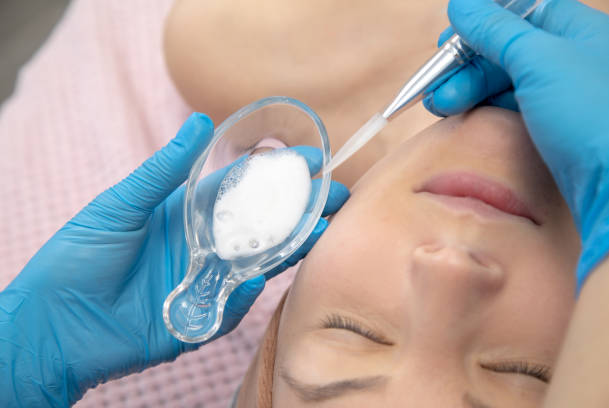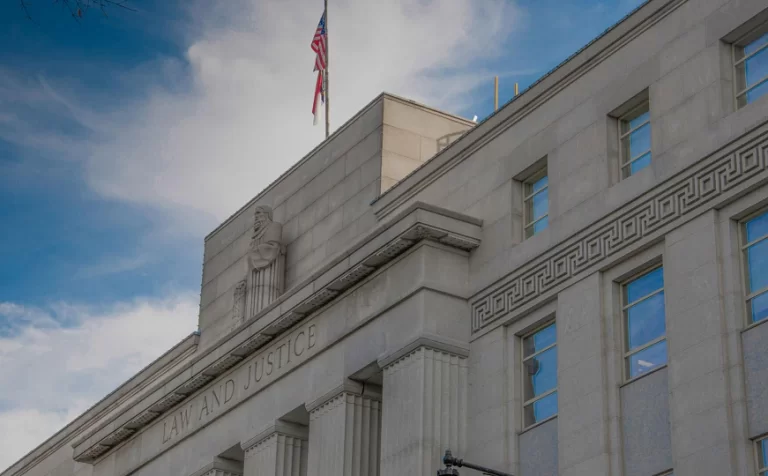The University of Southern California (USC) and the Los Angeles County Department of Public Health released preliminary results on Apr. 20, 2020 from a collaborative study that suggests infections from the coronavirus in Los Angeles County are more widespread, and the fatality rate much lower, than previously assumed. Based on antibody testing results from 863 adults, the research team estimated that approximately 4.1 percent of the county’s adult population has been infected and has antibody to the virus. This infection rate is 28 to 55 times higher than the 7,994 confirmed cases of COVID-19 reported to the county at the time of the study in early April, and translates into approximately 221,000 to 442,000 adults in the county who have been infected.1
The study tested for antibodies, which is useful for identifying past infection. Participants were recruited using a proprietary database that is representative of the county’s population, and were tested at six drive-thru testing sites on Apr. 10 and 11, 2020. The researchers intend to repeat the study every two to three weeks for several months, in order to track the trajectory of the virus’ spread. Results of the study are preliminary and have not yet been peer-reviewed by other scientists.
Lead researcher Neeraj Sood, PhD, professor of public policy at the USC Price School for Public Policy and senior fellow at the USC Schaeffer Center for Health Policy and Economics, stated, “We haven’t known the true extent of COVID-19 infections in our community because we have only tested people with symptoms, and the availability of tests has been limited. The estimates also suggest that we might have to recalibrate disease prediction models and rethink public health strategies.”
“These results indicate that many persons may have been unknowingly infected and at risk of transmitting the virus to others,” said Barbara Ferrer, PhD, MPH, director of the Los Angeles County Department of Public Health.
Paul Simon, chief science officer at the Los Angeles County Department of Public Health and co-lead on the study cautioned, “Though the results indicate a lower risk of death among those with infection than was previously thought, the number of COVID-related deaths each day continues to mount, highlighting the need for continued vigorous prevention and control efforts.”
The results of the USC study came three days after researchers at Stanford University reported that the coronavirus appears to have circulated much more widely in Santa Clara County, California, than previously thought. The findings bolster the sense that a significant portion of those carrying the virus could show no symptoms at all. Deborah Birx, MD, the coordinator of President Trump’s coronavirus task force, said during a White House briefing that the USC results underscore “concern about asymptomatic spread” because it is harder to trace.2 The two antibody prevalence studies are the largest conducted in the U.S. to date.
Using antibody tests to determine infection incidence provides a more accurate picture of how many of those infected have complications resulting in death. The mortality rate is based on the number of confirmed infections and confirmed deaths; the higher the number of infections, the lower the fatality rate. Both the USC and the Stanford University studies estimated a mortality rate of 0.1 to 0.2 percent, which is closer to the death rate associated with the seasonal influenza.
Most experts agree there are far more coronavirus infections in the world than are being counted. But as soon as the numbers from both studies were released, the researchers were criticized for how they arrived at those numbers. Chief among their concerns was the accuracy of the test underpinning both studies, and whether the scientists had fully accounted for the number of false positives it might generate. Marm Kilpatrick, PhD, an infectious disease researcher at the University of California at Santa Cruz worries that the results of these two studies could erode public trust in the need for lockdowns. “If that’s based on faulty information, that would be terrible,” he said.
One of the biggest criticisms is that the researchers were overly confident in the antibody test’s false-positive rate and failed to account for the likely possibility that it could be lower or higher—a potential difference that would dramatically affect the studies’ conclusions. Both studies used tests from Premier Biotech, and accuracy claims were independently verified at Stanford University. The researchers assumed a false positive rate of 0.5 percent, but acknowledged it could range between 0.1 and 1.7 percent. Researchers adjusted for this range while calculating their infection estimates, but given the small number of samples used to validate the test, coupled with the fact that the test is almost as new as the virus, critics say it’s possible that the true false-positive rates could be even higher than presented. The test can also generate false negatives estimated to be in the range of 20 to 28 percent.3
Dr. Sood, who is a member of both the USC and the Stanford research teams, said that he and the Stanford team had done their best to adjust for the test’s false positives and false negatives, while acknowledging that they were taking a second look at their confidence intervals. “As new data comes in about these tests, we will update these results,” he said.
References:
1 Hopper L. Early antibody testing suggests COVID-19 infections in L.A. County greatly exceed documented case. USC News Apr. 20, 2020.
2 Mason M. Thousands in L.A. County may have been infected with coronavirus, study finds. Los Angeles Times Apr. 20, 2020.
3 Lee S. Two Antibody Studies Say Coronavirus Infections Are More Common Than We Think. Scientists Are Mad. Buzzfeed News Apr. 22, 2020.













11 Responses
Would you please be so kind, dear author of this article, as to invite and interview of an esteemed & ethical epidemiologist so they could explain to us very succinctly what EXACTLY is meant by an “asymptomatic spread” (of disease)? I thank you. Future generations thank you!
I KNOW – THEORY, THEORY, THEORY – A LIKELY REASON THAT FAUCI REACTE NEGATIVELY TO THE IDEA OF MORE PEOPLE GETTING INFECTED IS THAT WE’RE REDUCING THE BASE OF TARGETS FOR OUR WORLDWIDE MANDATORY VACCINATION – HE EXPRESSED THE WISH THAT MORE PEOPLE WOULD NOT DEVELOP IMMUNITY.
Asymptomatic spread is a simple concept. Those carrying the disease but not showing any symptoms go around, possibly transmitting to others who may contract it. It is the concept behind “typhoid” Mary. She did not maliciously make people ill. She just did not know she had typhoid because her immune system did it’s job.
Phyllis, I am not an epidemiologist but a licensed dietitian….. asymptomatic spread means that the virus spreads to individuals whose immune system is able to fight it off, therefore never develop any symptoms. We are exposed to hundreds of bacteria and viruses and in most cases, don’t develop symptoms to them but still develop immunity. That’s the reason kids are encouraged to “play in the dirt.” Their immune systems develop immunity to the world around them and keeps them healthier in the long run. The good news is that because the virus spreads so easily and the fatality rate looks to be very low, we could develop herd immunity much faster than we thought.
Not necessarily….we all carry bacterial disease and RNA or retrovirus within us without being infected by others. or infecting others…..then with depressed or destroyed immunity (by lifestyle or medical treatments, old age), opportunistic diseases (bacteria, retrovirus) take hold.
does anyone have true numbers of the mortality rate from all causes since the beginning of the year? By true numbers I mean NOT what is reported by the media. I have been searching and cannot find anything. I am asking because there are rumors spreading about: 1) miscoding of COVID19 cases related death to “fluff” those numbers; 2) other causes of death being on the decline (how could that be); and 3) overall mortality of all causes in the US showing truly no significant changes from previous years. Aside from my questions above, this is a really interesting study and in many ways showing that paralyzing the economy and infringing in liberties was at a minimum unnecessary.
https://www.youtube.com/watch?v=d6MZy-2fcBw
This was early in the “pandemic” but still very relevant to knowing and investigating the real numbers……which so far are just conjecture. Oh! I guess the flu conveniently stopped infecting people and Covid took over! Thanks Covid, said Fauci.
Has this been reported in the media ? Or is it not bad enough news to make the cut for the purposes of instilling as much fear as possible ?
Is the conclusion regarding under 1% mortality rate for those who have been infected by Covid-19 , or that of the general population with or without the Covid-19 virus ?
“but given the small number of samples used to validate the test, coupled with the fact that the test is almost as new as the virus, critics say it’s possible that the true false-positive rates could be even higher than presented. The test can also generate false negatives estimated to be in the range of 20 to 28 percent.3”
These tests are worthless to say the best about them. Ig tests are long known for their cross reactions to many other pathogen proteins or just other antibodies in the blood…..false positives. Unless you make these tests with the exact specific virus, isolated from infected patients in millions of viral particles, the exact specific proteins cannot be derived from this isolated virus, thus test mfgrs substitute proteins in the test markers. False negatives are not an issue if testing asymptomatics and should be ignored. False positives are important to know in asymptomatics and that’s really what these tests were designed to be used for…..just like in the HIV “crisis” that never happened…..unless taking the iatrogenic drugs (AZT), heavy street drugs or serious gay party lifestyle, poppers, drug use, constant antibiotics for stds……..hmmm where’d my immune system go? Wasn’t PC to blame gay men for their choices…
Anyone have solid information on the deployment of 5G and hotspots of Covid-19 severe symptoms? Not assuming causation but possible correlation that might need further investigation since this pandemic is being used as justification for the Internet of Things, tracking, and AI along with online home schooling, and work which need 5G,